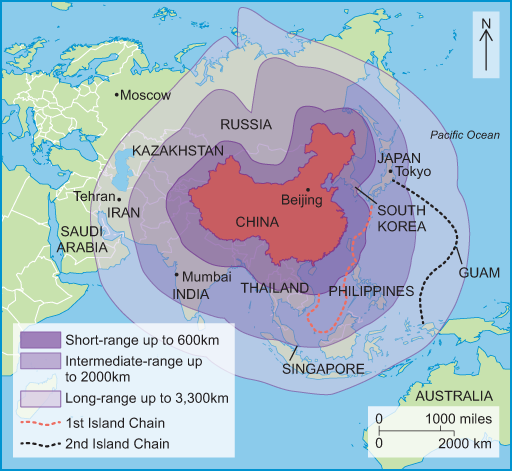4.4 Competing regional influence?
As China increases its military expenditure, US policy makers fear it could use this increasing power to gain concessions from US allies in the region and exert its power regionally. The Chinese army is the largest army in the world, with over two million personnel, and is becoming increasingly technically sophisticated, changing the nature of the ‘threat’ to the United States. For China’s part, it points to the long-standing US military presence in the region.
Figure 15 below shows US estimates of China’s missile capability in 2011. It also identifies a number of places where the United States has military bases: Thailand; Japan; South Korea; Australia; Guam; Philippines, and Singapore.

Activity 7
Study Figure 15 above and make a few notes in the box below about how this distribution of forces (Chinese missiles and US bases) might be seen differently by China, the United States and by other countries in the region.
Discussion
The size of China (in terms of territory, population and military capabilities) could understandably make other states in the region very nervous. Its missile technology could put in jeopardy the United States’ aircraft-carrier groups and its air-force bases in Japan, South Korea and even as far away as Guam. This might render US power projection in Asia riskier and more costly and mean that US allies would be unable to rely upon the United States to deter aggression.
However, Chinese fears that it is ‘encircled’ by US military power have some basis too. The danger of situations like this is that what one state sees as a defensive development may be seen by others as an offensive development. Realists like John Mearsheimer emphasise that such uncertainty makes the region unstable and prone to conflict.
